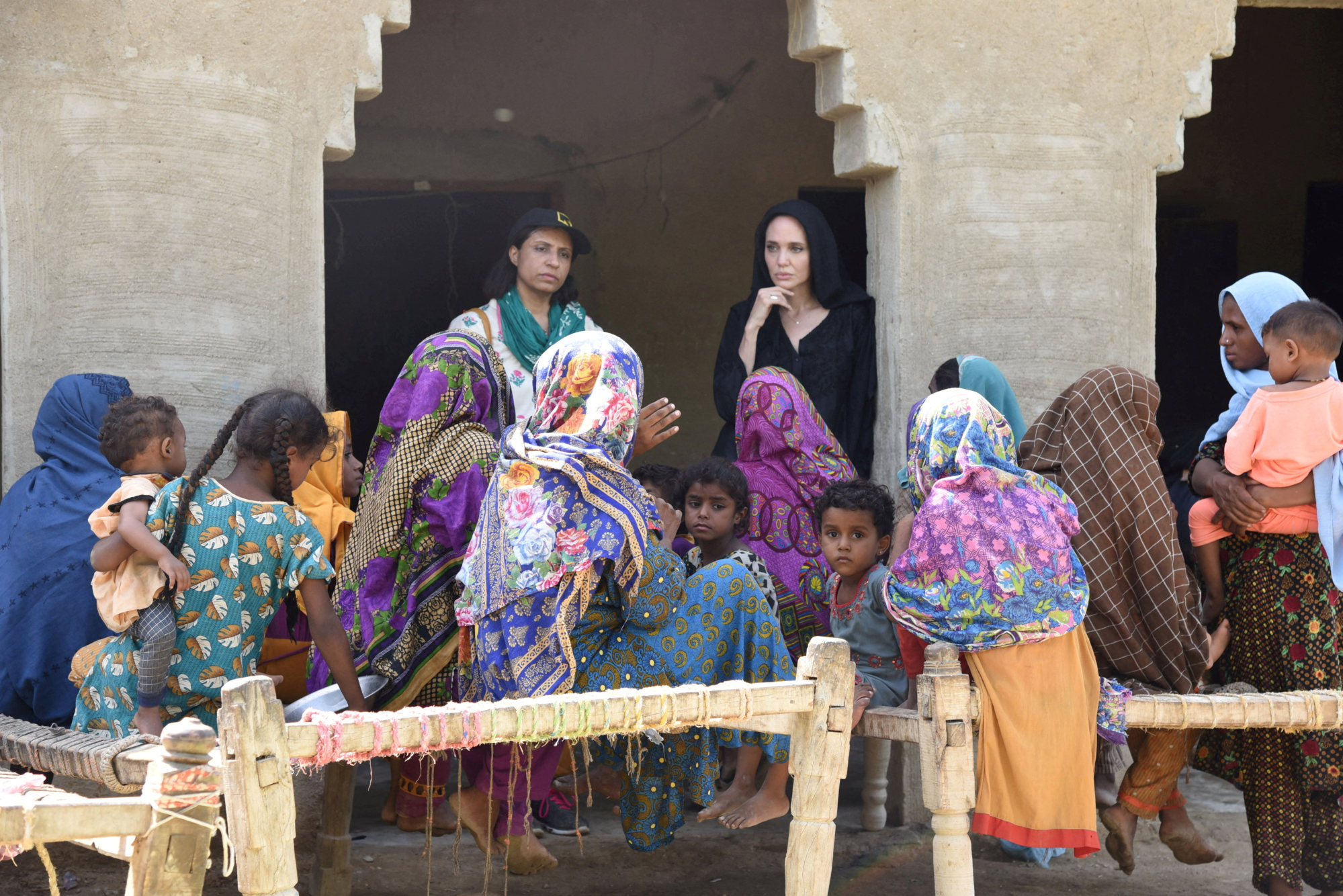
As Angelina Jolie visits, Pakistan fears surge in flood-borne diseases, deaths could get ‘out of control’
- Hundreds of thousands of people have been displaced by Pakistan’s massive floods and are living out in the open as they wait for the waters to recede
- But that could take up to six months, officials say – as diseases like malaria, dengue fever, skin and eye infections, and acute diarrhoea proliferate
An intense and long monsoon dumped around three times as much rain on Pakistan than on average in recent weeks, causing major flooding that killed 1,559 people, including 551 children and 318 women, according to the disaster management agency.
Officials are warning they now risk losing control of the spread of infections in a dire situation that Unicef described as “beyond bleak”.
Hundreds of thousands of people displaced by the floods are living in the open and as floodwaters spread over hundreds of kilometres start to recede – which officials say may take two to six months – stagnant waters have led to diseases like malaria, dengue fever, skin and eye infections and acute diarrhoea.
Actress and UN humanitarian Jolie arrived in Pakistan and visited communities affected by flooding in Dadu district, one of the worst-hit areas in southern Pakistan.
She met several women who were now living in tents, according to international aid organisation IRC, which is facilitating the visit. They described their struggles and told her they needed food, water and medical attention.

Jolie, who has dedicated herself to international humanitarian causes for more than a decade, also visited Pakistan after deadly flooding in 2010.
“There is already the diseases outbreak,” said Ahsan Iqbal, Pakistan’s planning minister, who is also the head of a national flood response centre jointly run by the government and the military.
“We fear it may get out of control,” he told a news conference in Islamabad.
In Sindh, the region worst hit by the floods, the provincial government said nine people had died of gastroenteritis, acute diarrhoea and suspected malaria on Monday, bringing the total number of deaths from diseases to 318 since July 1.
More than 2.7 million people have been treated for waterborne diseases at makeshift or mobile hospitals set up in flood-hit regions since July 1, it said, with 72,000 people treated at these facilities on Monday alone.
Three other provinces have also reported thousands of disease cases.
The influx has overwhelmed Pakistan’s already weak health system. Sindh provincial government has said that over 1,200 medical facilities were still marooned in floodwater.
Everywhere we go, we see desperation and despair growing
Malaria and diarrhoea are spreading fast, said Moinuddin Siddique, director at the Abdullah Shah Institute of Health Sciences at Sehwan city, which is surrounded by the floodwaters. “We’re overwhelmed,” he said.
At the news conference, planning minister Iqbal appealed to the affluent members of society to come forward to help the flood relief efforts, and asked medical volunteers to join hands with the government.
He appealed for 2 million nutrition packs for mothers who are expecting and newborn babies, saying the government was setting up more mobile hospitals and clinics in affected areas.
Record monsoon rains and glacial melt in northern Pakistan triggered the flooding that has affected nearly 33 million people in the South Asian nation of 220 million, sweeping away homes, crops, bridges, roads and livestock in damages estimated at US$30 billion. Scientists say the disaster was exacerbated by climate change.
The government says GDP growth is likely to drop to 3 per cent from a previous estimate of 5 per cent for the 2022-23 financial year.
In what Unicef described as a situation “beyond bleak”, it said an estimated 16 million children have been affected by the floods, and at least 3.4 million girls and boys remain in need of immediate, life-saving support.
Gerida Birukila, the Unicef Pakistan Chief Field Officer in southwestern Balochistan province, described the situation “utterly heartbreaking”.
The children are surrounded by pools of stagnant water poisoned with fertilisers and faeces and swarming with diseases and viruses, sometimes metres away from where they sleep, she told a news briefing in Geneva on Tuesday, according to a statement.
“Many families have no alternative but to drink the disease-ridden water,” she said, adding, “Everywhere we go, we see desperation and despair growing.”


